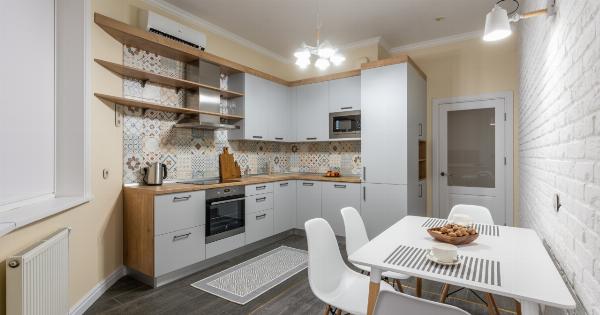When we think of architecture, we may think about the way that buildings look or how they are constructed. However, architecture is much more than just a physical structure.
It is a reflection of culture, history, and the way that people interact with their environment. One aspect of architecture that is often overlooked is its impact on mental health. Buildings can have a profound effect on our psychological well-being, and it is important to understand the ways in which design can contribute to mental illness.
The Relationship Between Architecture and Mental Illness
The design of our environment has a significant impact on our mental health. Buildings that are poorly designed or lack natural light and space can lead to feelings of depression, anxiety, and stress.
This can be particularly true in urban environments where buildings often have small windows and limited access to green spaces. Research has also shown that people who live in areas with a higher concentration of fast-food restaurants, convenience stores, and outdoor advertising are more likely to experience symptoms of depression.
On the other hand, buildings that are designed to include natural light, green spaces, and open floor plans can have a positive impact on mental health.
Studies have shown that people who live in buildings with more windows and natural light report better moods and a greater sense of well-being. Additionally, buildings that incorporate biophilic design (the incorporation of natural elements into the built environment) have been shown to reduce stress and improve cognitive function.
Building Design and Mental Health
Building design can have a number of psychological effects on the people who use them. For example, buildings with large ceilings and expansive windows can create a feeling of openness and freedom.
This can be particularly true in office buildings, where employees often work in small cubicles with limited natural light. Incorporating a sense of nature into a building’s design can also be beneficial. This can be done by incorporating green spaces or by using colors and materials that mimic natural settings.
Building design can also impact the way that people interact with each other. For example, buildings with narrow hallways and small rooms may create a feeling of claustrophobia and discourage social interaction.
On the other hand, buildings with open floor plans and communal spaces can encourage collaboration and socialization. This can be particularly important in workplace settings, where collaboration is often essential.
Spatial Design and Mental Health
Spatial design is another important aspect of architecture that can impact mental health. Different spatial designs can have different psychological effects on individuals.
For example, some people may feel more comfortable in smaller, more intimate spaces, while others may prefer larger, open spaces. Additionally, different layouts can impact the way that people move through a space and interact with others. For example, a winding pathway may encourage exploration and discovery, while a straight path may discourage interaction.
When designing spaces, it is important to consider the different needs and preferences of all individuals who will use the space. This can include things like lighting, color, and furniture placement.
A well-designed space should be comfortable, functional, and aesthetically pleasing to all who use it.
The Importance of Designing for Mental Health
Given the impact that architecture and design can have on mental health, it is important for architects and designers to consider the psychological effects of their work.
This can involve considering things like natural light, space, and material choices. It can also involve designing spaces that encourage socialization, collaboration, and a sense of community.
By designing for mental health, architects and designers can help to create environments that are both aesthetically pleasing and psychologically beneficial.
Designing for mental health can also have broader societal benefits. For example, buildings that are designed to encourage physical activity can help to combat obesity and other related health issues.
Additionally, workplaces that are designed to encourage collaboration and socialization can help to improve productivity and job satisfaction.
The Future of Design for Mental Health
The field of architecture and design is evolving to include a greater focus on mental health. As more research is conducted on the link between architecture and psychology, designers are beginning to incorporate these findings into their work.
This can include things like incorporating green spaces into buildings, using natural colors and materials, and designing spaces that encourage socialization and collaboration.
Technology is also playing a greater role in design for mental health. Virtual reality technology, for example, can be used to simulate different environments and test their psychological effects on individuals.
Additionally, advances in lighting technology can be used to create environments that mimic natural light and promote circadian rhythms.
Conclusion
Architecture and design can have a profound impact on our mental health.
Buildings that are poorly designed can lead to feelings of depression, anxiety, and stress, while buildings that are designed with mental health in mind can have a positive impact on our sense of well-being. By incorporating natural light, green spaces, and communal areas into our buildings, architects and designers can help to create environments that promote mental health and well-being.





























